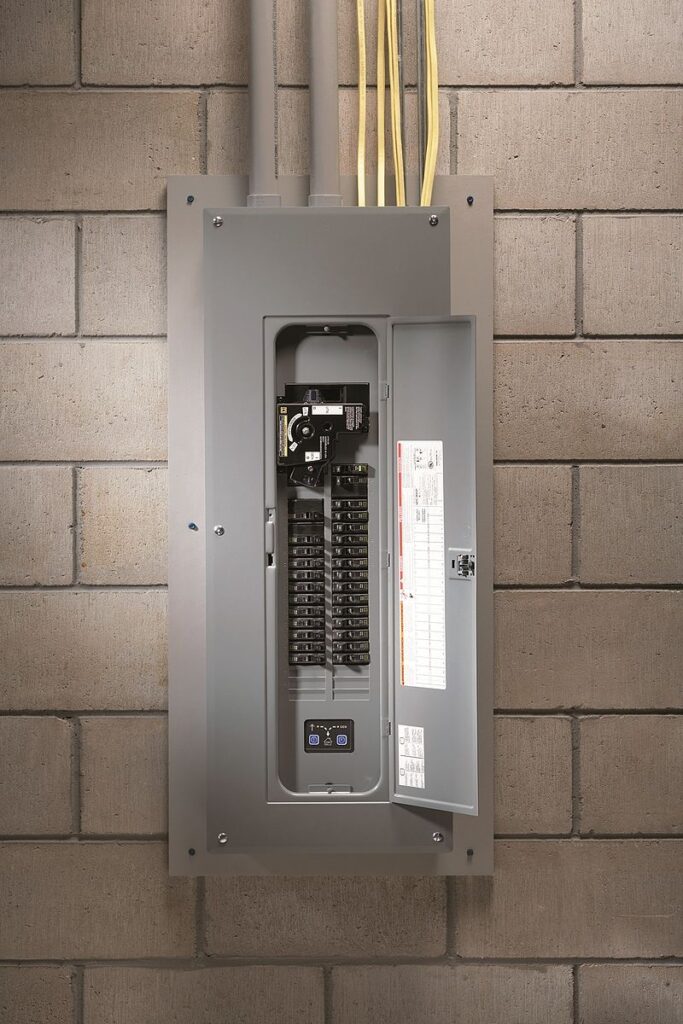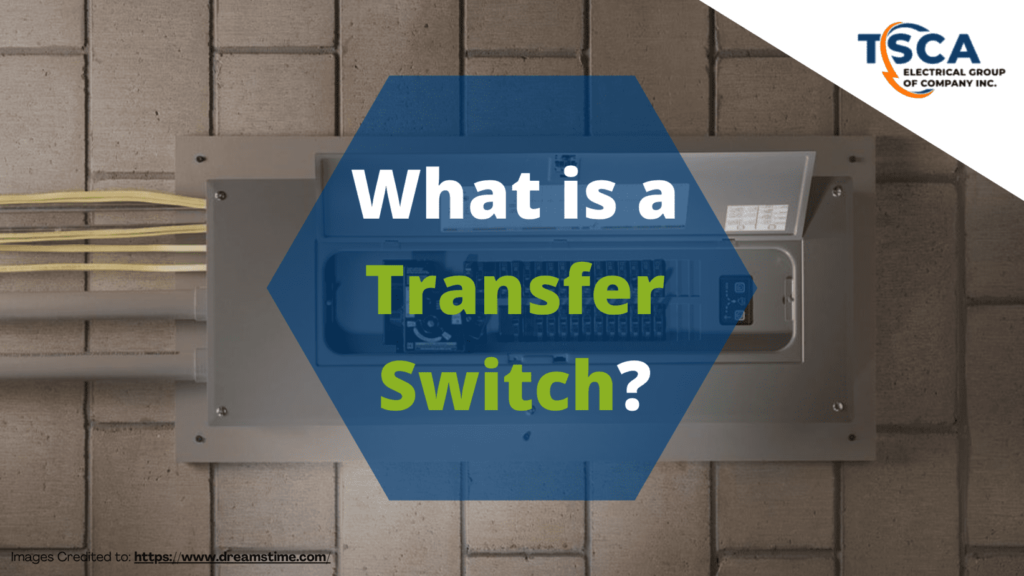Transfer Switch, it is an electrical switch that switches a load between two sources. Some transfer switches are manual, in that an operator effects the transfer by throwing a switch, while others are automatic and trigger when they sense one of the sources has lost or gained power.
An Automatic Transfer Switch (ATS), is often installed where a backup generator is located, so that the generator may provide temporary electrical power if the utility source fails.
Operation of a Transfer Switch
As well as transferring the load to the backup generator. An ATS may also command the backup generator to start, based on the voltage monitored on the primary supply. The transfer switch isolates the backup generator from the electric utility when the generator is on and providing temporary power.
The control capability of a transfer switch may be manual only, or a combination of automatic and manual. The switch transition mode of a transfer switch may be Open Transition (OT), or Closed Transition (CT)).
For example, in a home equipped with a backup generator and an ATS. When an electric utility outage occurs, the ATS will tell the backup generator to start. Once the ATS sees that the generator is ready to provide electric power. The ATS breaks the home’s connection to the electric utility and connects the generator to the home’s main electrical panel.
The generator supplies power to the home’s electric load, but is not connected to the electric utility lines. It is necessary to isolate the generator from the distribution system to protect the generator from overload in powering loads in the house and for safety, as utility workers expect the lines to be dead.
When utility power returns for a minimum time, the transfer switch will transfer the house back to utility power and command the generator to turn off, after another specified amount of “cool down” time with no load on the generator.
A transfer switch can be set up to provide power only to critical circuits or to entire electrical (sub) panels.
Some transfer switches allow for load shedding or prioritization of optional circuits, such as heating and cooling equipment. More complex emergency switchgear used in large backup generator installations permits soft loading. Allowing load to be smoothly transferred from the utility to the synchronized generators, and back. Such installations are useful for reducing peak load demand from a utility.

Application Types
Utility-to-Generator Transfer Switches
Transfer switches prevent electricity travelling in the wrong direction, such as from a home generator into the power grid. This means utility workers can be sure that they will not get a shock from someone’s home generator when they are working on overhead lines. This is one of the reasons why most electric codes mandate the use of a transfer switches when a residential generator is connected to the home’s electrical panel.
It’s not just home generators that require a transfer switch. Many types of businesses, industries and government services also rely on power generators, which also require a transfer switch. In some applications, specific requirements need to be catered for when installing a generator and transfer switch. For example, a data center’s backup power supply must become instantly available in the event of a power outage.
Utility-to-Utility Transfer Switches
Utility-to-utility transfer switches are applicable when a facility is equipped with multiple utility service feeds. A utility-to-utility transfer switch is used when electric consumers within the facility require the option to switch from one service to the other. A simple use case would be one where a commercial or industrial building has two electrical meters but a single electrical system. Depending on which tenant is using the building at any given time, the building can be switched from one meter to the other, ensuring that each tenant is only responsible for their own electrical consumption.
Generator-to-Generator Transfer Switches
Generator-to-generator transfer switches are needed at locations equipped with more than one on-site power supply. Typically, a generator-to-generator transfer switch is required when a home is equipped with solar panels and a generator. If the solar panels and the generator are not electrically isolated, the AC inverter associated with the solar panels may attempt to feed power back to the generator, creating a hazardous and potentially damaging situation for both the generator and the inverter. The transfer switch allows the homeowner to switch power between the solar panels and the generator. Keeping the two systems electrically separated.
Generator-to-generator transfer switches are also required at large industrial facilities with multiple on-site gensets. Depending on the facility’s electrical needs at any given time, different generators may be activated or deactivated. A mine, for example, may have variable power needs depending on which shafts are active and require ventilation at any given time, and may run a different set of generators accordingly.
Transfer switches are, in summary, required in a large variety of applications and are therefore available in many different sizes and configurations to suit every possible use case.
When selecting a transfer switch for a certain use case, multiple criteria need to be considered. This includes:
- The voltage,
- Current and number of phases of the application,
- Whether the switch has a safety-critical role,
- The duration of service interruption that the load can tolerate, and
- The environment in which the switch will be placed, and more.
Is a Transfer Switch Worth It?
The biggest benefit of having a transfer switch in a residential setting is that you gain the ability to power things up via your circuit breaker panel instead of having to use extension cords. This includes hardwired devices, such as your dishwasher, hot water heater, air conditioning, and ceiling fans.
What Kind of Transfer Switch do I Need?
The best way to size a manual transfer switch is to match it to the largest outlet on your generator. For example, if you see that your generator’s largest outlet is rated at 30 amps, you will need to buy a 30-amp transfer switch to get the full power load.
—
Thanks for reading What is a Transfer Switch?, visit our blog page for more articles. We would love to hear about your electrical needs. Furthermore, please feel free to email or call us. Someone from our team will respond to your request right away. Feel free to Contact Us.
1st Source(s): https://en.wikipedia.org/wiki/Transfer_switch
2nd Source(s): https://www.cummins.com/generators
Images used in the content is Credited to: https://en.wikipedia.org/wiki/Transfer_switch
Images used in the Featured Image is Credited to: https://en.wikipedia.org/wiki/Transfer_switch
“No copyright infringement is intended”





